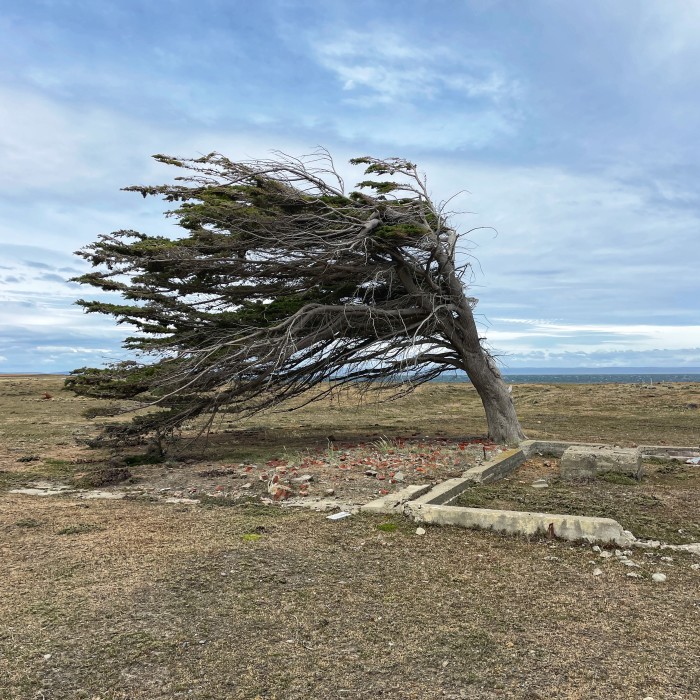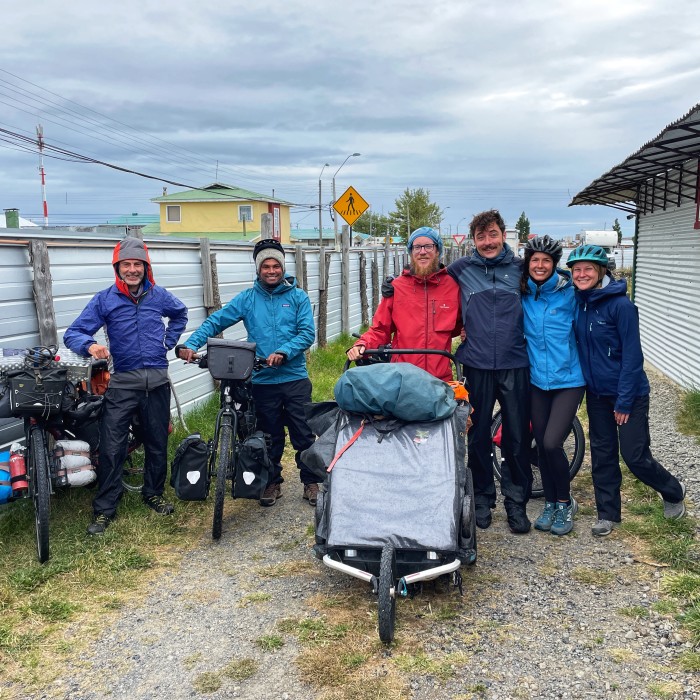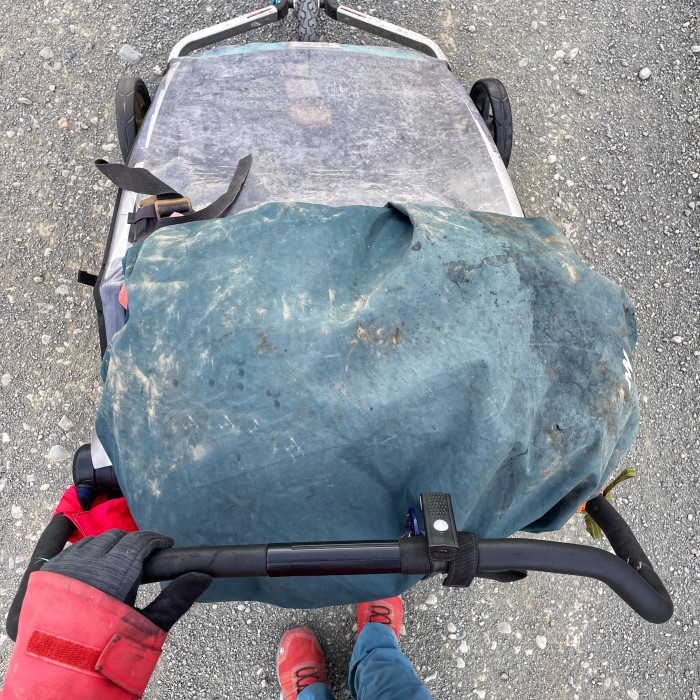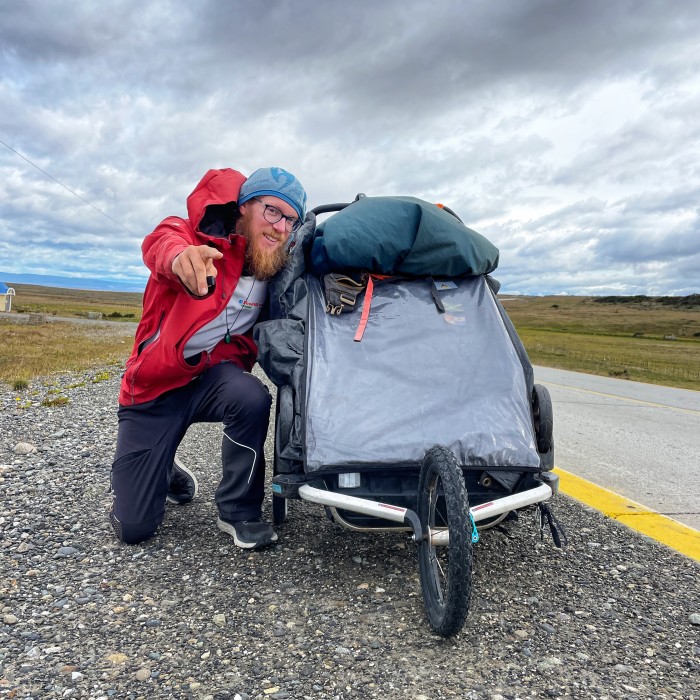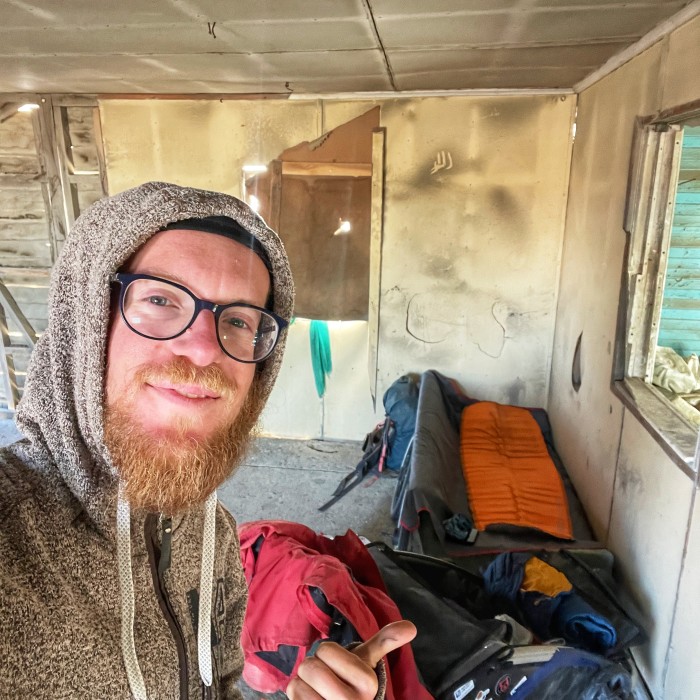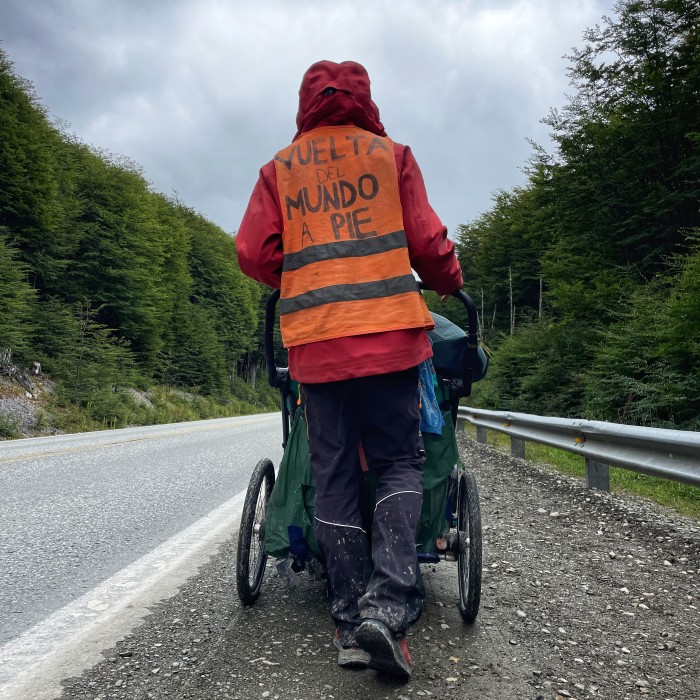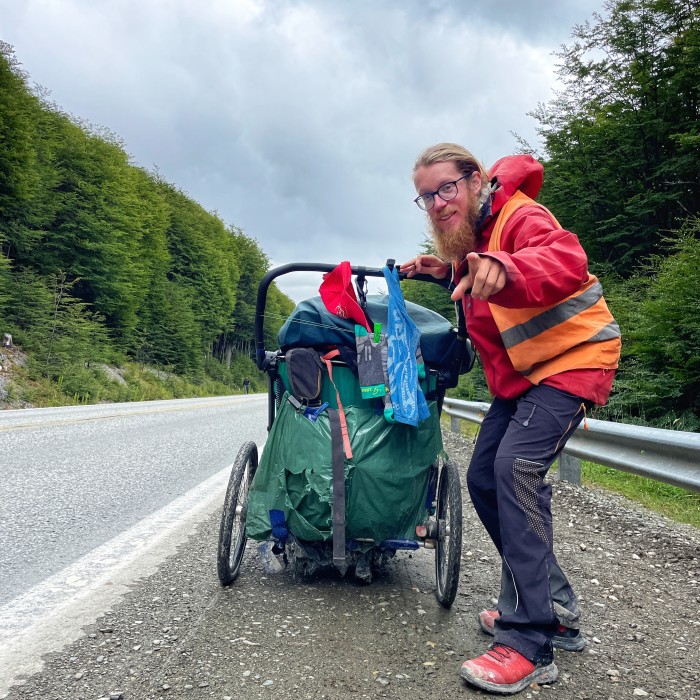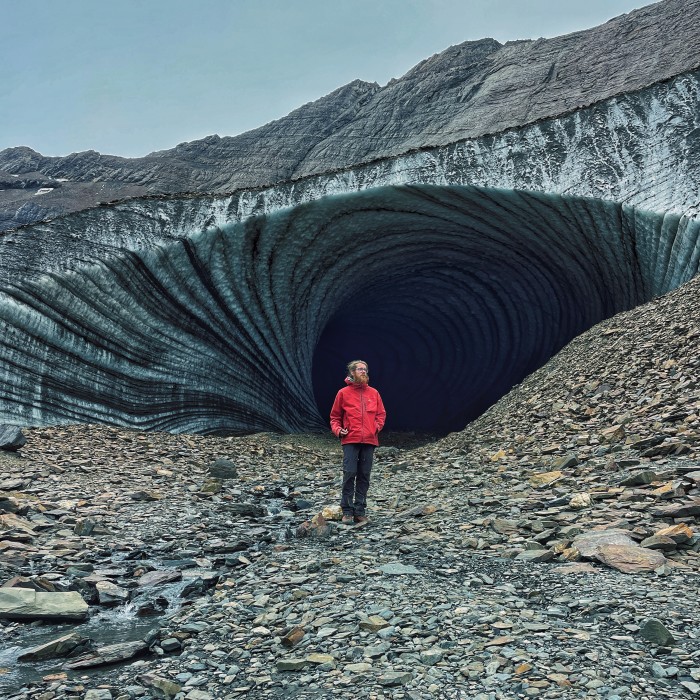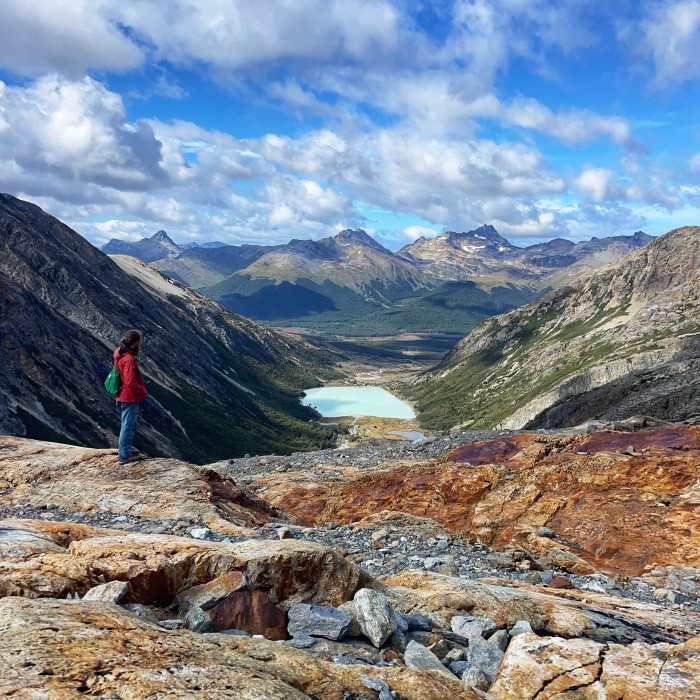
Finally, Ushuaia
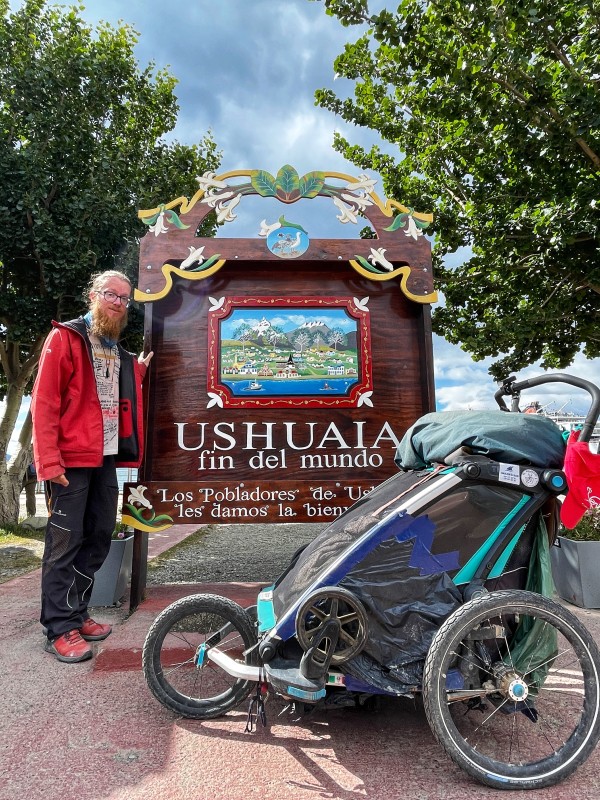
SO...
How long to the End of the World?
I’ve just left Calafate, the 20,000-people pueblo that marks the entrance to the most famous glacier in South America, the Perito Moreno. The 70-metre-high, 5-kilometre-long colossus is an impressive sight. Once in a while, tourist destinations are actually worth it. And I was lucky: I happen to see it on the day of the World Cup final, so footbridges and belvedere platforms are practically deserted. Something that happens every thirty years perhaps...
The wind blows from the west, as always. The Campos de Hielo Sur (Southern Ice Fields) are a forge of storms at the heart of the Andes, directly generating the desolate landscape of the Pampas. Rain is blocked on the other face of the Cordillera, the Chilean side of the Carretera Austral with its fjords, while here, in the Argentinian Patagonia, the dry and rough land is populated only by short, thorny shrubs. The pueblo behind me is named after one of them, the calafate: a bramble with berries similar to blueberries, which won’t ripen for another few weeks. Summer has yet to begin in this hemisphere.
I leave Calafate heading south, as I’ve been doing for two years now. Quito and its Mitad del Mundo – as the block letters claim on the outskirts of the Ecuadorian capital – are now 10,000 km away. I calculate I have two months to go, maybe less, before reaching the End of the World, Ushuaia on the island of Tierra del Fuego. I quickly do the maths in my head: 250 km to the Chilean border, then 60 to Puerto Natales, will take at least a week. Then a break to wash clothes and stock up on food, with a real kitchen to make something hearty to eat and regain the weight lost along the way: butter, eggs and manjar – that is milk and sugar, South America’s version of Nutella. From Puerto Natales to Punta Arenas there are another 250 km, which will take another week. Punta Arenas means Brenda and Arturo: she’s a niece to Nelly, who gave me shelter a few months ago in the central area of Chile. I have their contacts, and I will stay at their house for a few days to spend some time together.
I’ll be craving lightness once I’m back in town.
How far ahead have I planned, now? Ah yes, mid-January. From Punta Arenas you have to take a ferry to Porvenir: you’re still in Chile but you go from the mainland to the island of Tierra del Fuego. Magellan named it. The fires lit by the Yanamas and Kawésqar must have impressed him quite a bit. Porvenir is so small I may not even stop there: there is a fire station where I could ask for hospitality for the night, but if I get there early enough, maybe I can cover another handful of kilometres before dark. It’s light until ten or eleven in the evening now, so even if I start walking mid-morning I have plenty of time to finish my daily 40-km stage. With the Chilean border at 130 km, it will take 3-4 days. Tierra del Fuego is divided by a straight line, Chile on the left and Argentina on the right. I go right. Two intense days to get to Rio Grande, an uninteresting industrial city, then another 200 km to Ushuaia.
That’s the end of my journey in South America, a full stop after a two-year journey. The end of the world.
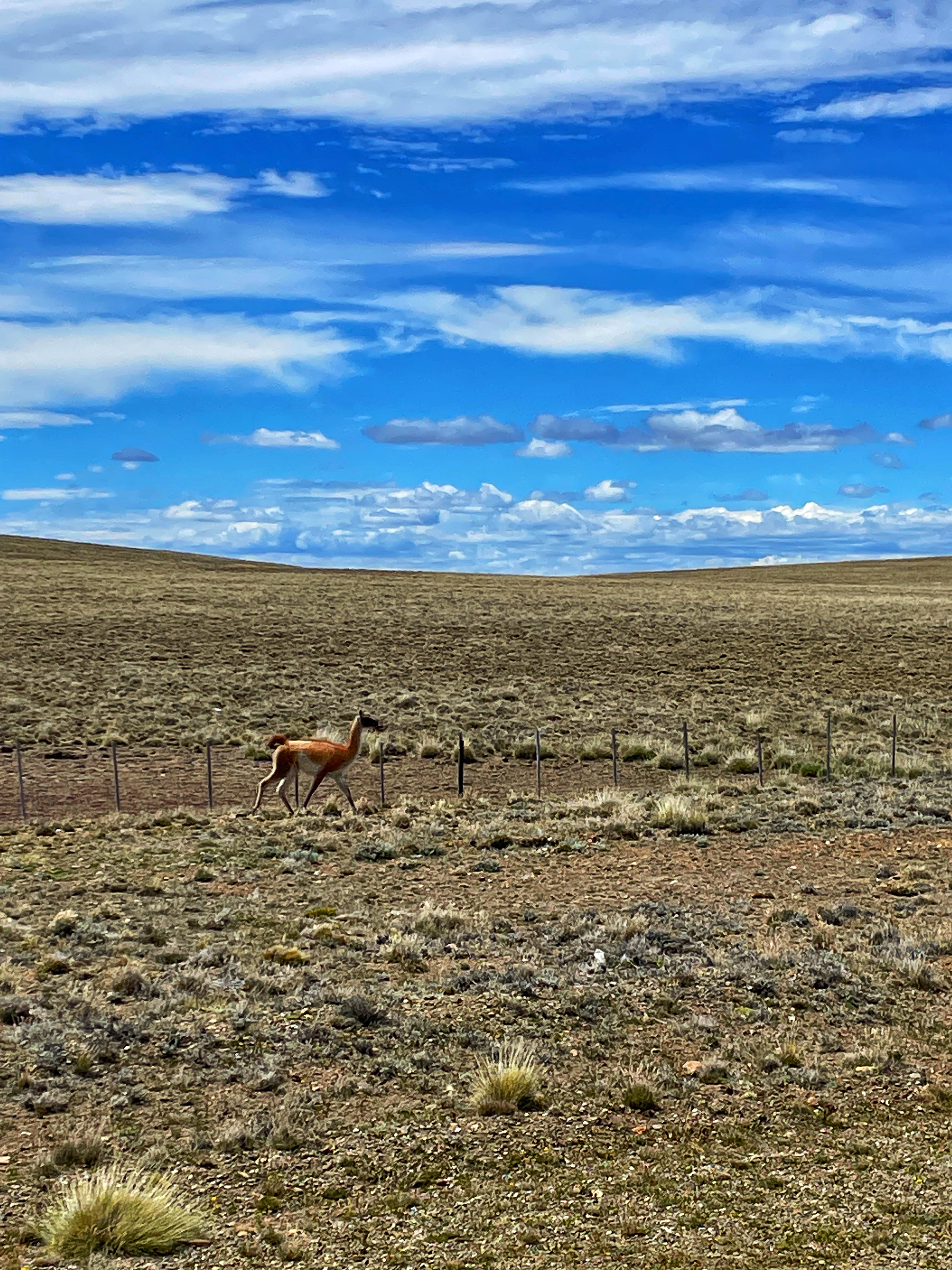
REFLECTIONS ON THE ROAD
I let out a deep sigh, my ribcage expanding. It’s the last thousand miles, damn it. Moments like these call for a reflection on the past, trying to find meaning or perhaps make sense of the time dedicated to so much effort. What is the common thread that brought me here? Slowness, of course: the slowness of travelling on foot. But also beauty: the real goal of a slow journey that brings us to meet and know people and things by name. I have found that the beauty of knowledge can run deep, connecting us to what we experience. A mountain can be striking for its soaring shape, prominent peak or white snow-capped summit set against the blue sky. But what’s left of it, once we look away? A faded image stored in our memory, perhaps one among the thousand photographs we collect with enthusiasm and forget in a different archive – the distant and foreign one inside our phone. Naming things is an attempt at saving something through infatuation. The named object passes from being an object to being that object, with a pinch of feeling that binds us to the story that began with our encounter. This is how I make sense of my journey: through the names of everything I met and got to know. Andes, Atacama Desert, Belén, Pablo, Gian, Patagonia, Campos de Hielo, Becky, Pampa... On a page in my diary, I have transcribed the names of all the people
who have left me something. Each of them is a chapter of this adventure and reading their names takes me back to the moment when our story was enacted. I’m with Ezio, the stroller that carries everything I need. Some would say I’m alone, but I think that over time Ezio has acquired its own personality, greatly shielding me from the feeling of isolation that uninhabited places can bring with them. Indeed, we find ourselves chatting quite frequently. Isn’t that right, my friend?
“Of course, you old hulk. In the realm of the imagination, anything goes. And you’re daydreaming again.”
“I think that’s a requirement when you go around the world on foot. Where are we sleeping tonight?”
The question might seem rhetorical in a land dotted by rocks and shrubs, but the Patagonian winds are famous for never resting. Every afternoon I have to find shelter, even just next to the wall of a house left in ruins. I recently inaugurated the Namika 2, the brand new all-season, two-person tent by Ferrino, which is even lighter and more compact than the epic Manaslu: it’s low and resists the wind well, but I still prefer to find shelter. The wind is tiring in the long run, and taking pressure off the ears is an indescribable relief after a day of struggle.
On my map, I’ve marked the spots that might offer protection. I come to a stream of water with a bridge across the middle: I can set up camp here tonight, sheltered by the concrete base. I pitch the tent and enjoy what’s left of the afternoon. Having just left town, tonight’s dinner is ready to eat and I don’t even need to warm it up. I spend the remaining hours of daylight reading, and observing the sky. In this corner of the world, the clouds move fast.
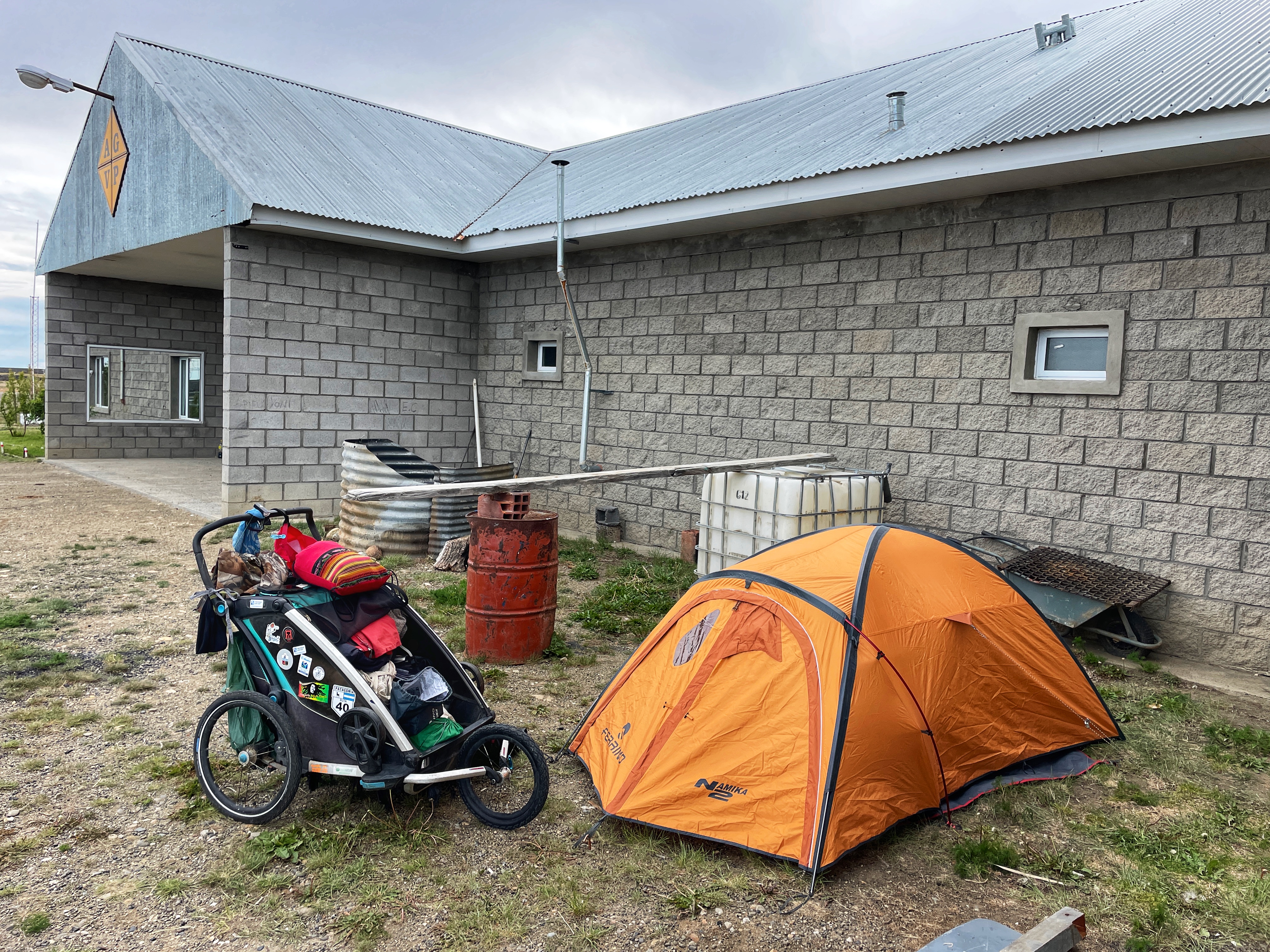
A LONG STRIP OF LAND
My days towards Chile are full of twists and turns. On Christmas Eve, I am invited to share a roast lamb with Javier, the man in charge of road maintenance at the Tapi Aike puesto fijo, a sort of roadman’s house. I passed several of these buildings along Ruta 40, the road that starts from the border with Bolivia and reaches the southern tip of Argentina. Every time, I found some form of hospitality, from a place to pitch my tent to the chance of taking a shower; in this case, it’s a rich and filling meal in the company of Javier and two German cycle travellers. I spend Christmas walking, and arrive at the border with Chile in the evening. Here too I manage to find something warm to eat. These isolated posts are kept in operation by young soldiers who are assigned five-year terms, away from their families and friends. We’re the same age, and all they were waiting for was something new to break the monotony of their days: today that’s the job for me, the dude who got here on foot from Ecuador!
On December 26 I return to my beloved Chile: the long, narrow strip of land where I have lived for the last year. I arrive in Puerto Natales, where I meet other cycle travellers at the cheapest campsite in town, and continue towards Punta Arenas. There are a couple of days with winds so strong that, for once, I prefer to spend the day in the tent and rest. It would be dumb, not to mention exhausting, to push forward against winds blowing at 100-km/h in the opposite direction. Peering through the Namika’s porthole, I can see a few placid guanacos graze on the withered grass; with a stroke of luck, I even get to see a ñandú, the Patagonian ostrich.
I land on the island of Tierra del Fuego in mid-January. I’m on schedule with my plan, so I decide to slow down and take advantage of the last few days on the road. I won’t leave for Australia for almost two months: there is no hurry. And there are several shelters available on the Chilean side of the island: wooden forts designed for shepherds and fishermen, devoid of furniture but offering the comfort of four walls and a roof – the sweetest reward after a day of walking. Protected from the elements, cooking becomes a pleasure again. I realise how happy it makes me to have a small fire to heat water: travelling teaches you to truly take nothing for granted.
The border near San Sebastian is my last farewell to the route in Chile. It took me 6,000 km, half of the total covered in South America, to cross the country from top to bottom. I think I was the first person to do it all on foot. As I cross the border, I stop to think. Did I really travel across Chile? I think the answer is no, because in my heart I feel that I actually lived there. It’s about the amount of time, of course: when I was a student at university, I spent ten months abroad with the Erasmus program and it always feels normal for me to say “I lived abroad” when I talk about that experience. So, considering the amount of time is approximately the same, it feels natural to say that I “lived” in Chile too. But that’s not all.
The wealth of experiences I had in this country is unmatched, so far on this trip. Dozens of families hosted me along the way, and I got to know their rhythms, political views and dreams, going with them to do the grocery shopping, queue at the post office or at the city hall. They taught me their idioms, the festivities of each region and how they prepare their homes for winter. I sipped steaming mate in front of a wood stove, drawing heat into the stomach. It’s not just a trip anymore: this is my life, I live like this now. I keep moving, but I feel like I live in the places I pass, I let them take me and I belong to them as long as I’m there: I live there. I no longer travel from one place to another, but instead move from one place where I am temporarily residing to another. Latin America is no longer where I’ve been, but where I belong.
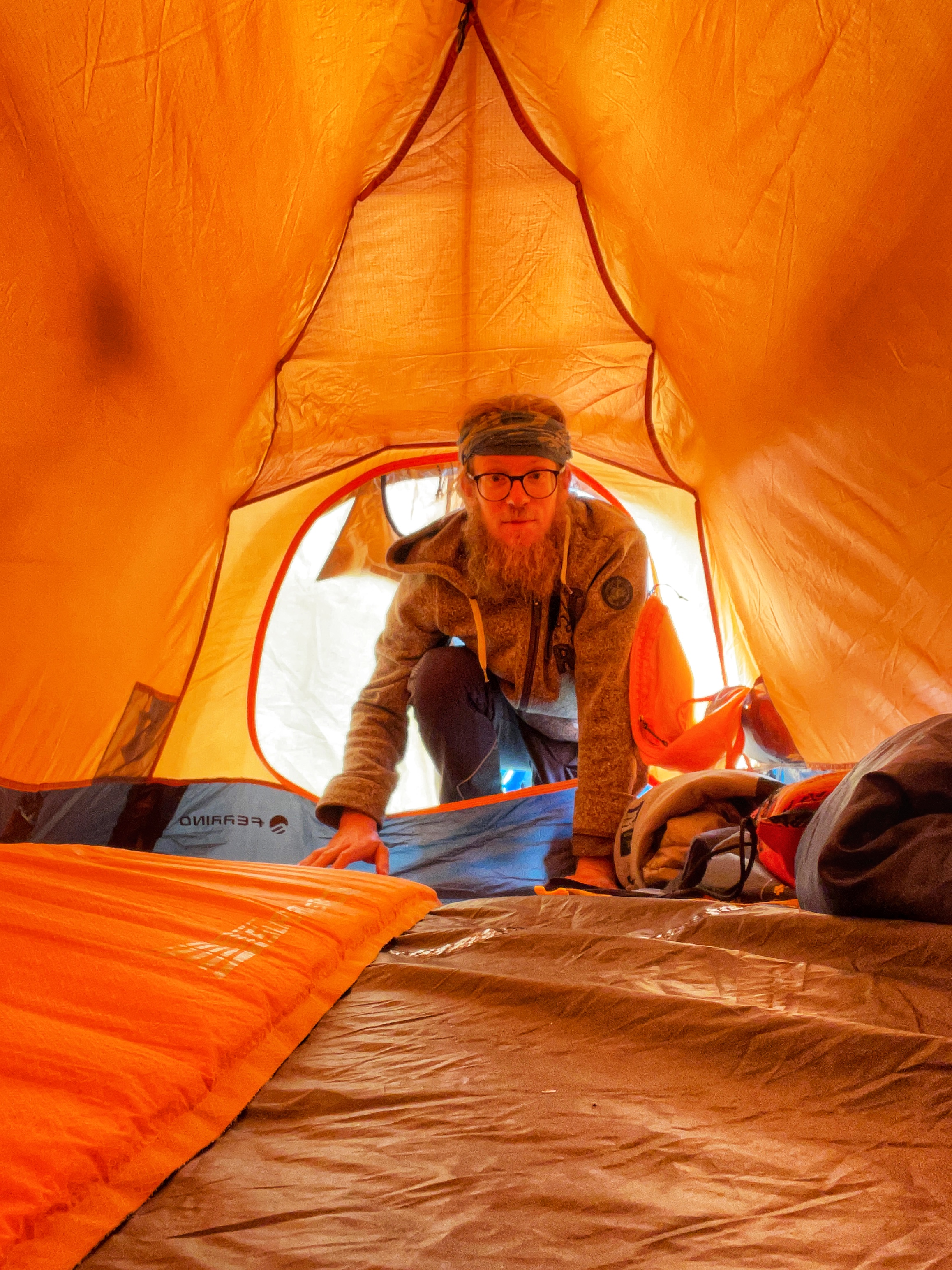
THE END...?
I arrive in Ushuaia about ten days later, physically and mentally exhausted. My last, real break dates back to eight months ago, when I was waiting for my visa for Australia in Santiago. I walk along the seafront, to the two-metre-high sign that reads “Ushuaia, Fin del Mundo” and yet I don’t feel any particular thrill to celebrate this arrival. It’s strange. I thought I’d be moved, but instead... I look at Ezio and smile. We have reached the End of the World, the road ends here. It’s time to change course and start our return. It took two and a half years to get to the extreme south of the Earth and it will probably take just as long before I see home again. I turn my gaze west. Beyond the Pacific Ocean, beyond the islands of paradise, another world awaits: a gigantic and mysterious red desert, full of expectations. Australia...
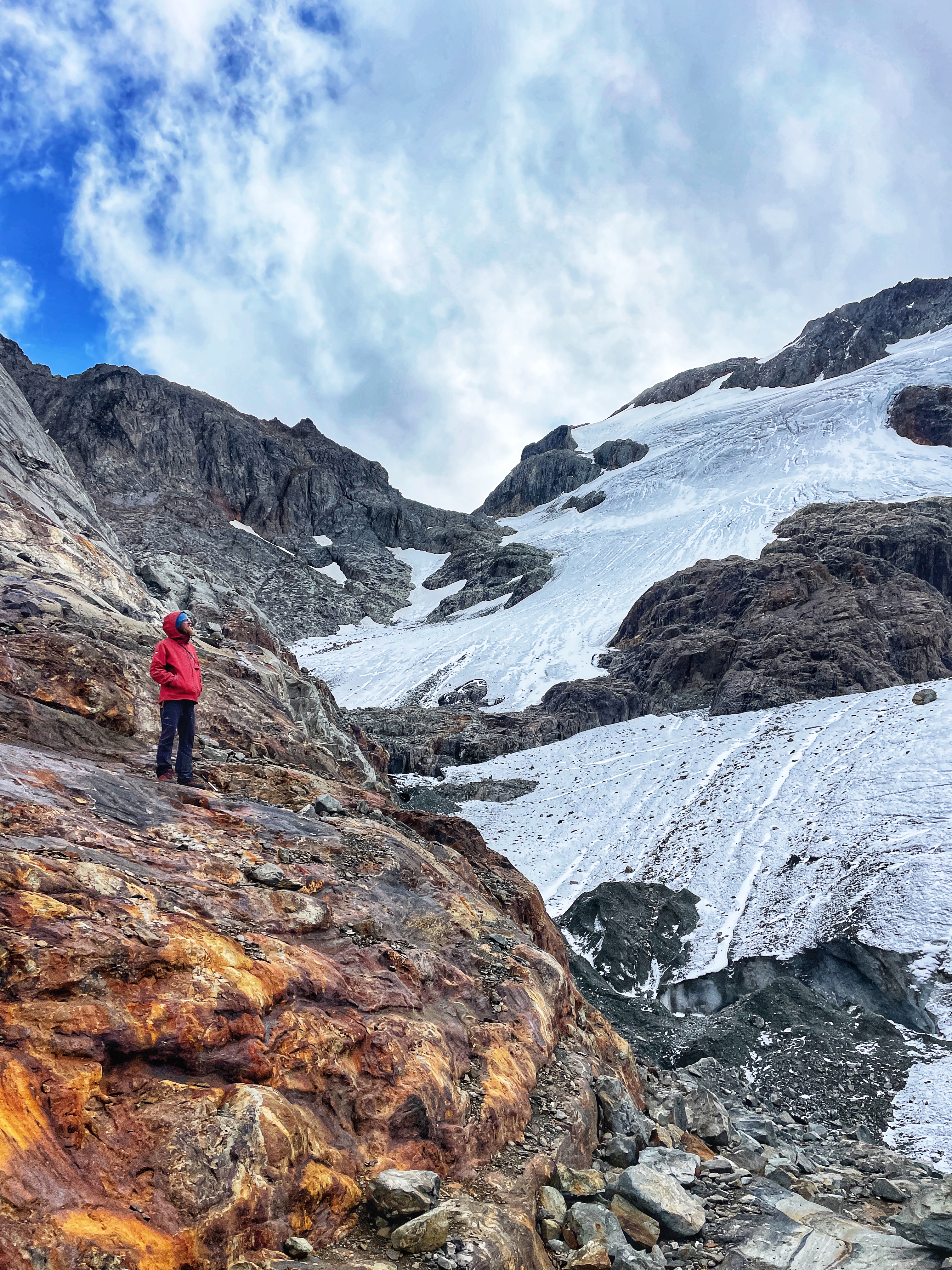
Share this article
